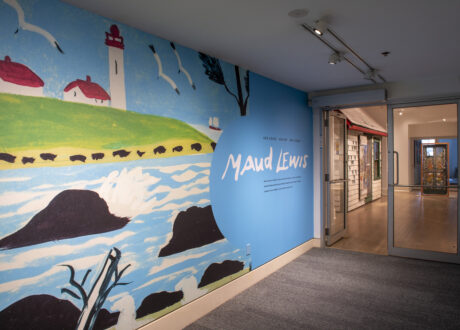

Arctic/Amazon: Networks of Global Indigeneity explores the ways in which Indigenous contemporary artists take on issues of climate change, globalized Indigeneity, and contact zones in and about the Arctic and the Amazon during a time of crisis. The featured artists have their origins in these places, and their works embody a politics of resistance, resurgence, and ways of knowing and being in relation to the lands that are the source of their knowledge and creativity.
A constellation of new and past works by artists Sonya Kelliher-Combs (Iñupiaq and Athabascan, United States), Tanya Lukin Linklater (Alutiiq/Sugpiaq, United States/Canada), Couzyn van Heuvelen (Inuk, Canada), Máret Ánne Sara (Sámi, Norway), Uýra (Indigenous in diaspora), Olinda Reshinjabe Silvano, Wilma Maynas & Ronin Koshi (Shipibo-Konibo, Peru), Morzaniel Ɨramari Yanomami (Yanomami, Brazil), Gisela Motta & Leandro Lima(Brazil), Pia Arke (Kalaaleq and Danish, Greenland/Denmark), Sheroanawe Hakihiiwe (Yanomami, Venezuela) and Biret & Gáddjá Haarla Pieski, Outi Pieski (Sámi, Finland) are featured in Arctic/Amazon. Encompassing a range of media, including paintings, drawings, sculpture, installation, video, and performance, this exhibition seeks to shed light on current geopolitical and environmental sustainability issues that inform artistic practices in these two vastly different, yet interconnected, regions.

Uýra, Portraits of the artist, 2017-19.
The main themes in this group exhibition are drawn from the Arctic/Amazon symposium that was co-hosted by the Ontario College of Art & Design University and The Power Plant in September 2019. The purpose of the symposium was to gather established and emerging Indigenous scholars, curators, and artists primarily from North American regions of the Arctic and Amazonian zones to meet, exchange ideas, share works, and develop collaborative strategies that would bring together traditional knowledges of Indigenous and non-Indigenous communities.
Artworks in this exhibition contain sequences of flashing images and sensory audio. Viewer discretion is advised.
Presented by:

Arctic/Amazon: Networks of Global Indigeneity is initiated, organized, and circulated by The Power Plant Contemporary Art Gallery, Toronto, in collaboration with the Art Gallery of Nova Scotia, Halifax. It was was curated by Gerald McMaster (Lead Curator), Nina Vincent (Co-Curator), and Noor Alé (Institutional Curator). The presentation of the exhibition was supported by Lead Donor, Hal Jackman Foundation; Major Donor, Goring Family Foundation; International Arts Partners: The Andy Warhol Foundation for the Visual Arts, Outset Contemporary Art Fund, and Nordic Bridges.

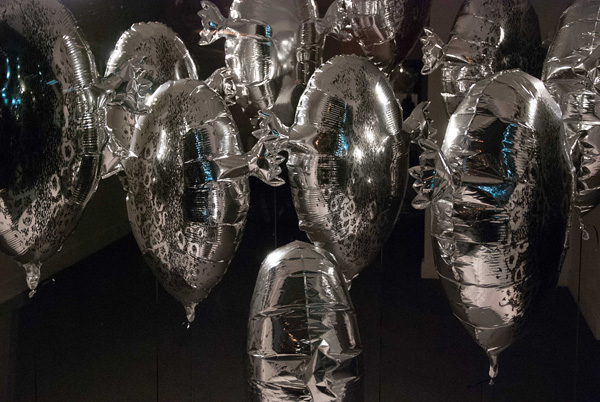
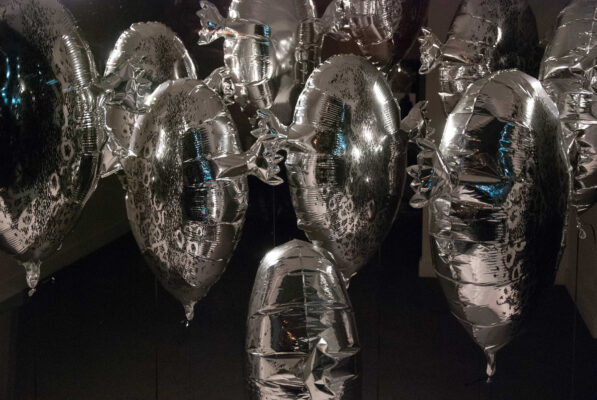

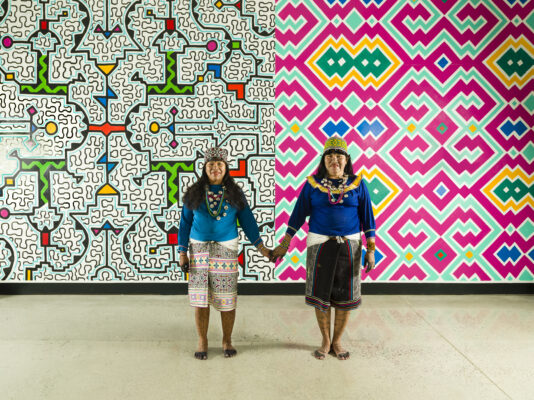

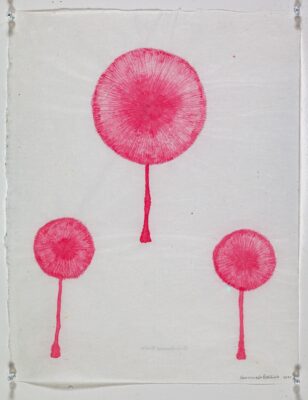
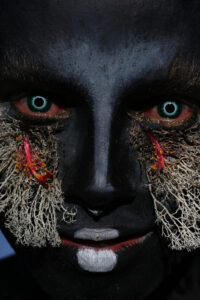

 Couzyn van Heuvelen is an Inuk sculptor and installation artist originally from Iqaluit, NU. Based in southern Ontario, van Heuvelen’s artistic practice focuses on fusing Inuit art history and traditions with contemporary materials and technologies. Van Heuvelen’s use of unconventional materials and fabrication processes, combined with elements of Inuit culture, mirrors his own process of exploring how traditional practices continue to influence his everyday life.
Couzyn van Heuvelen is an Inuk sculptor and installation artist originally from Iqaluit, NU. Based in southern Ontario, van Heuvelen’s artistic practice focuses on fusing Inuit art history and traditions with contemporary materials and technologies. Van Heuvelen’s use of unconventional materials and fabrication processes, combined with elements of Inuit culture, mirrors his own process of exploring how traditional practices continue to influence his everyday life. Máret Ánne Sara (b.1983) is an artist and author. She is from a reindeer herding family in Kautokeino and currently works in her hometown. Máret Ánne is the initiator of Dáiddadállu Artist Collective. She has published two novels and was nominated for the Nordic Council’s Children’s and Young Literature Prize in 2014 for her debut book “Ilmmid gaskkas” (published in Norwegian in 2014 and in English in 2016). The follow-up “Doaresbealde doali” was published in 2014. Sara is currently working on the contemporary art project Pile o’Sápmi, which was presented at Documenta 14 in Kassel in 2017.
Máret Ánne Sara (b.1983) is an artist and author. She is from a reindeer herding family in Kautokeino and currently works in her hometown. Máret Ánne is the initiator of Dáiddadállu Artist Collective. She has published two novels and was nominated for the Nordic Council’s Children’s and Young Literature Prize in 2014 for her debut book “Ilmmid gaskkas” (published in Norwegian in 2014 and in English in 2016). The follow-up “Doaresbealde doali” was published in 2014. Sara is currently working on the contemporary art project Pile o’Sápmi, which was presented at Documenta 14 in Kassel in 2017. Olinda Reshinjabe Silvano is an Indigenous Shipibo-Konibo artist from Peru, utilizing traditional art of kené in her creative practice.
Olinda Reshinjabe Silvano is an Indigenous Shipibo-Konibo artist from Peru, utilizing traditional art of kené in her creative practice. Outi Pieski is a Sámi visual artist, born in 1973 in Helsinki, Finland. Pieski’s paintings, collages and installations employ traditional handicrafts such as the tassels of Sámi shawls to depict the light and landscapes of the far north.
Outi Pieski is a Sámi visual artist, born in 1973 in Helsinki, Finland. Pieski’s paintings, collages and installations employ traditional handicrafts such as the tassels of Sámi shawls to depict the light and landscapes of the far north. Pia Arke (b. 1958, Ittoqqortoormiit, Greenland, d. 2007, Copenhagen, Denmark) was a Danish Greenlandic visual and performance artist, writer and photographer.
Pia Arke (b. 1958, Ittoqqortoormiit, Greenland, d. 2007, Copenhagen, Denmark) was a Danish Greenlandic visual and performance artist, writer and photographer. Sheroanawe Hakihiiwe is an Indigenous Yanomami artist from Sheroana, a small community of the Upper Orinoco River in the Venezuelan Amazon. Working primarily with drawing and handmade papers crafted from native fibers, he draws from his ancestral knowledge of the signs and symbols of Yanomami culture, and their application in basketry and body painting for ritual ceremonies. While such practices are female in Yanomami culture, he has consciously recovered these motifs to build his visual lexicon. Hakihiiwe’s work is a very personal interpretation of Yanomami tradition and identity; his drawings and paintings speak to his rites and beliefs, observations of the jungle and concern for the ecosystem.
Sheroanawe Hakihiiwe is an Indigenous Yanomami artist from Sheroana, a small community of the Upper Orinoco River in the Venezuelan Amazon. Working primarily with drawing and handmade papers crafted from native fibers, he draws from his ancestral knowledge of the signs and symbols of Yanomami culture, and their application in basketry and body painting for ritual ceremonies. While such practices are female in Yanomami culture, he has consciously recovered these motifs to build his visual lexicon. Hakihiiwe’s work is a very personal interpretation of Yanomami tradition and identity; his drawings and paintings speak to his rites and beliefs, observations of the jungle and concern for the ecosystem. Sonya Kelliher-Combs is an Iñupiaq and Athabascan multidisciplinary artist based out of Anchorage, Alaska. Kelliher-Combs born in 1969 in Bethel, Alaska and was raised in the Northwest Alaska community of Nome. Her Bachelor of Fine Arts degree is from the University of Alaska Fairbanks and Master of Fine Arts is from Arizona State University. Through her mixed media painting and sculpture, Kelliher-Combs offers a chronicle of the ongoing struggle for self-definition and identity in the Alaskan context. Her combination of shared iconography with intensely personal imagery demonstrates the generative power that each vocabulary has over the other. Similarly, her use of synthetic, organic, traditional and modern materials moves beyond oppositions between Western/Native culture, self/other and man/nature, to examine their interrelationships and interdependence while also questioning accepted notions of beauty. Kelliher-Combs’ process dialogues the relationship of her work to skin, the surface by which an individual is mediated in culture.
Sonya Kelliher-Combs is an Iñupiaq and Athabascan multidisciplinary artist based out of Anchorage, Alaska. Kelliher-Combs born in 1969 in Bethel, Alaska and was raised in the Northwest Alaska community of Nome. Her Bachelor of Fine Arts degree is from the University of Alaska Fairbanks and Master of Fine Arts is from Arizona State University. Through her mixed media painting and sculpture, Kelliher-Combs offers a chronicle of the ongoing struggle for self-definition and identity in the Alaskan context. Her combination of shared iconography with intensely personal imagery demonstrates the generative power that each vocabulary has over the other. Similarly, her use of synthetic, organic, traditional and modern materials moves beyond oppositions between Western/Native culture, self/other and man/nature, to examine their interrelationships and interdependence while also questioning accepted notions of beauty. Kelliher-Combs’ process dialogues the relationship of her work to skin, the surface by which an individual is mediated in culture. Tanya Lukin Linklater is an Indigenous artist-choreographer of Alutiiq descent, born in 1976 in Kodiak Island, Alaska.
Tanya Lukin Linklater is an Indigenous artist-choreographer of Alutiiq descent, born in 1976 in Kodiak Island, Alaska. Uýra Sodoma is an Indigenous Brazilian visual artist born in 1991. A graduate of Biology and Ecology, they are also part of art education in riverside communities. They reside in Manaus, an industrial territory in the middle of the Central Amazon, where they transform themself into Uýra, a manifestation in animal and plant flesh that moves to expose and cure colonial systemic diseases.
Uýra Sodoma is an Indigenous Brazilian visual artist born in 1991. A graduate of Biology and Ecology, they are also part of art education in riverside communities. They reside in Manaus, an industrial territory in the middle of the Central Amazon, where they transform themself into Uýra, a manifestation in animal and plant flesh that moves to expose and cure colonial systemic diseases.